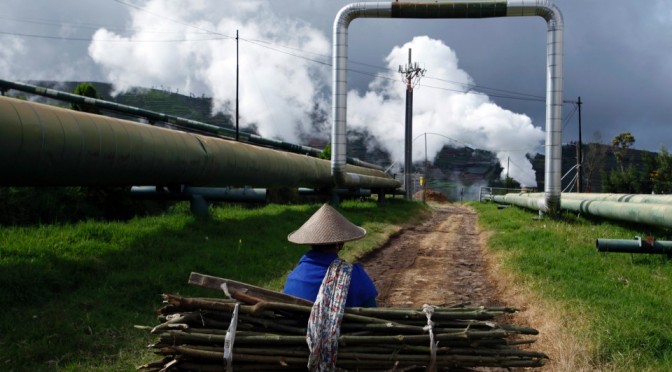In the middle of this year, the government is set to auction a number of areas with geothermal energy potential that can be developed, in a bid to increase the capacity of the country’s geothermal power plants.
The areas to be auctioned are expected to generate at least 375 megawatts (MW) of power.
The geothermal director at the Energy and Mineral Resources Ministry, Tisnaldi, said the working areas to be offered include Lake Ranau in Lampung and South Sumatra, with a potential production capacity of 110 MW, Mount Lawu in Central and East Java with 100 MW, Mataloko in East Nusa Tenggara with 30 MW, Simbolon Samosir in North Sumatra with 80 MW and Way Ratai in Lampung with 55 MW in power potential.
“Regarding Way Ratai, there still needs to be several discussions with state-owned electricity firm PT Perusahaan Listrik Negara to ensure it conforms with its electricity procurement plan. We will keep trying to offer more areas,” Tisnaldi said.
Despite its abundant geothermal resources, the country only has a handful of geothermal power plants. The country is estimated to have 29 gigawatts (GW) of geothermal potential or around 40 percent of the world’s resources. However to date, the installed capacity of geothermal power plants is only 1,341 MW.
This year, there will be only 62 MW in additional capacity that will come from Patuha plant (55 MW), Ulumbu plant (5 MW) and Cibuni plant (2 MW), according to Tisnaldi.
“If we carry out new tenders now, the additional capacity will be seen only in the next 6 to 7 years,” he said, adding that there were around 1,500 MW geothermal projects currently being developed from previous offerings.
As part of its programs to diversify the source of electrical power, the government has been promoting the development of renewable energy projects. Under its plan, as many as 6,500 MW geothermal plants are expected to be in operation by 2025.
Given the shortfall between current capacity and the target in 2025, the country needs to see annual additional capacity of around 469 MW in electricity from geothermal power plants to meet the goal.
Indonesian Geothermal Association chairman Abadi Purnomo said the development of geothermal plants was faced the usual problems such as land clearing, financing, infrastructure, pricing and prolonged permit issuances.
Other problems include social issues related to local residents and environmental issues on the usage of forested areas.
The government has been trying to resolve various issues related to the geothermal power plant projects.
The Ministry is awaiting approval from the House of Representatives over several points in the Geothermal Law, including the amendment of an article stating that geothermal development in the same category as mining activities.
Geothermal development should be seen as non-mining activity and therefore there needs to be an amendment to the law to make works on forest conservation areas legal under the Forestry Law.
Most geothermal resources lay in protected forest areas.
Regarding the pricing, Tisnaldi said a ceiling price would be used in determining the value of electricity produced by geothermal power plants. “The ceiling price will be applicable for new projects,” he said.
The giant geothermal project called Sarulla, which is located in North Sumatra, recently secured US$1.17 billion in funding from international lenders, including the Japan Bank for International Cooperation (JBIC), Asian Development Bank (ADB) and a consortium of a number of international commercial banks. The Sarulla project, whose three-stage development will result in a total 330 MW, is estimated to cost $1.5 billion.
http://santamarta-florez.blogspot.com.es/2014/04/indonesia-set-to-auction-375-mw.html


